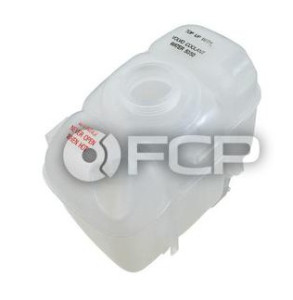- 03/17/2015
- 1 Min Read
- By: Alex Fiehl
Replace Your Coolant Expansion Tank (Genuine Volvo)
It's almost carshow season, and it's about time. After one of the worst winters I've ever experienced, I'm excited to start spring cleaning and get my engine bay ready for the springtime show circuit. Back in 2012 my Volvo S70 underwent an engine removal with the primary intention of cleaning it up. Nasty aluminum corrosion came off with a wire wheel, billowing away in thick white clouds. (It's called a whiteblock for a reason) Grease and oil came off with a rag and carb cleaner, and a full re-seal ensured it never dripped out again. In the end I had a beautiful engine and bay, but there was one eyesore that could not be ignored.
[gallery type="square" columns="2" size="medium" ids="8720,8719"]
Despite days of elbow grease and attention to detail, the nasty coolant expansion tank didn't stand a chance at looking any better without calling it quits and putting a new one in. Why it took me an additional year to get this taken care of, I'll never know, but the replacement brightened up the bay considerably and was the final piece to the project. Now, the engine bay looks cleaner than a vehicle with 80,000 miles despite having clocked upwards of 180,000.
'99-00 P80 - Volvo Expansion Tank (S70 V70 C70) 30741975
'93 850 - Volvo Expansion Tank (850) Genuine Volvo 9141106
'94-98 850/S70/V70 - Volvo Expansion Tank (850 C70 S70 V70) - Genuine Volvo 9141095
Most 01+ P2 Vehicles - Volvo Expansion Tank - Genuine Volvo 30741973OE
Replacement
Only two hoses and one sensor retain the coolant expansion tank into the vehicle.
- Remove the radiator cap
- Drain some coolant out of the radiator into a clean container using a 13mm socket on the drain petcock.
- When the expansion tank is empty, slide the tank upwards and out of the vehicle a few inches
- Reach under the tank to disconnect the coolant level sensor connector, pry out the sensor, then disconnect the two hoses.
- If equipped, remove the power steering reservoir from the expansion tank and affix it to the new part.
https://www.youtube.com/watch?v=siRrVddHWM8
About the Author: Alex Fiehl
Alex is FCP's Blog Editor and a Desktop Engineer from Endwell, NY. He has over 9 years of experience working on a wide array of import makes, but has found his home with European cars. With a Volkswagen and Volvo at home, the garage is always busy.
is FCP's Blog Editor and a Desktop Engineer from Endwell, NY. He has over 9 years of experience working on a wide array of import makes, but has found his home with European cars. With a Volkswagen and Volvo at home, the garage is always busy.












